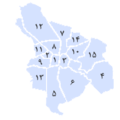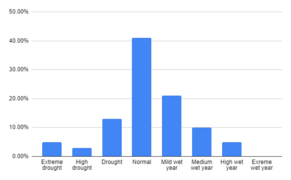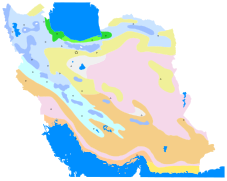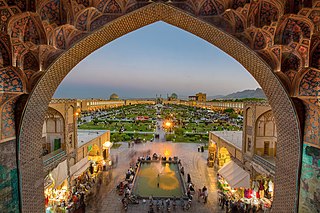
Isfahan, from its ancient designation Aspadana and later Spahan in middle Persian, rendered in English as Ispahan, is a major city in Greater Isfahan Region, Isfahan Province, Iran. It is located 406 kilometres south of Tehran and is the capital of Isfahan Province. Isfahan has a population of approximately 1.9 million, making it the third-largest city in Iran, after Mashhad and Tehran, and the second-largest metropolitan area.

Chaharmahal and Bakhtiari Province is one of the 31 provinces of Iran. It lies in the southwestern part of the country. Its capital is Shahr-e Kord.

Isfahan Province, also transliterated as Esfahan, Espahan, Isfahan, or Isphahan, is one of the thirty-one provinces of Iran. It is located in the center of the country in Iran's Region 2. Its secretariat is located in the city of Isfahan.
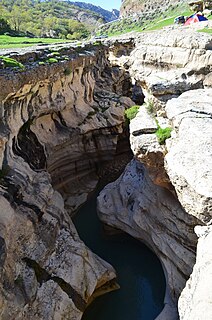
Ilam Province is one of the 31 provinces of Iran. It is located in the western part of the country in Region 4 and covers 20,164.11 km2 (7,785.41 sq mi), while sharing 425 km (264 mi) of the border with Iraq, and also bordering on the provinces of Kermanshah, Lorestan, and Khuzestan. The largest city and also the provincial capital is the city of Ilam with a population 194,030. As of 2016 census, the population of the province was 580,158 people and is the least populated province in Iran.

Najafabad is a city and capital of Najafabad County, Isfahan Province, Iran. At the 2016 census, its population was 293,275, in 90,158 families. It is located west of Isfahan and is increasingly becoming a part of the Isfahan Metropolitan area.

City Park, with its 26 hectares, is an urban park located in the central Tehran, Iran. It is the first public park in Tehran. City Park surrounded by Fayaz Bakhsh Street from the north, Hafez Street from the west, Behesht Street from the south and Khayyam Street from the east.
Komshecheh is a city in Habibabad District, in Borkhar County, Isfahan Province, Iran. At the 2016 census, its population was 4,871, in 1,152 families.

Darreh Shahr is a city, and seat of Darreh Shahr County, located in the south-eastern part of Ilam Province, in the northern foothills of Kabir Kuh ranges. According to the 2016 census there are 21,900 residents, making it the second-largest city in the province.

Sepehr Salimi is an Iranian blogger, environmental and animal welfare activist, vegetarian and freelance journalist. He is best known as the originator of “Green Wave” blogging in Iran.

The Municipality of Isfahan is responsible for the management of the city of Isfahan. The highest-ranking official of this organization is the mayor of Isfahan, who is chosen by the Islamic City Council of Isfahan. The city of Isfahan has 15 administrative divisions and each division has its own mayor, who work under the mayor of Isfahan. The present mayor of Isfahan is Ali Ghasemzadeh.

The 2018–2019 Iranian general strikes were a series of protests that took place across Iran against the country's economic situation.
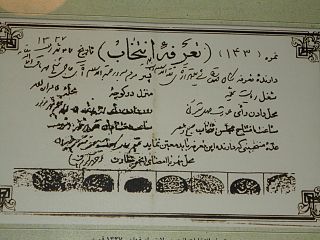
The Isfahan National Holy Association was the main political and decision-making bureau of Isfahan, Iran during the first Persian Constitutional Revolution period. The members of the council were elected by the people of Isfahan and Nurollah Najafi Isfahani chaired the council. The association was formed between years 1906 and 1908, namely from the migration of Qom to the 1908 bombardment of the Majlis at the Fort of Chehel Sotoun in Isfahan.

Solomon Carpet is an Iranian acrylic and BCF yarn spinning and machine-made carpet producer located in Isfahan. This company is one of the leading manufacturers/exporters of machine-made carpets in middle east. The company registered as "Rasoul Isfahan Industrial company" to produce variety of yarns and machine-made carpets in different sizes and patterns.

Commerce has always been central to the growth of Isfahan, to the extent that the Safavid Shah Abbas I (1588–1629) effectively re-routed the Silk Road through Isfahan. As of 2019, economic transparency is lacking in Isfahan. The Association of Mass Builders of Housing and Construction is an institution to encourage professionalism and create a suitable platform for investment. The Isfahan 1405 (2026) strategic plan is the sixth five-year plan of the city that has been uploaded on the municipal transparency site, and citizens can view it.

The government of Isfahan consists of a mayor and a 13 member municipal legislature. The Isfahan National Holy Association was involved in the Persian Constitutional Revolution.

Isfahan Fair is a trade fair in Isfahan City. Its Chief Executive Officer is Ali Yarmohammadian.
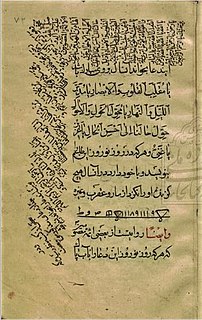
Mullah Mohammad Jafar Sabzevari was one of the Iranian scholars and clerics of the 12th century AH, the Imam of Friday Prayer of the Shah Mosque in Isfahan and the author of several books and treatises including "Nowruznameh" and "Ma'ad" which was compiled at the request of Shah Sultan Hussein Safavid.

Mohammad Hossein Esheni or Mohammad Hossein Esheni Qudejani was an Iranian Shiite cleric and experienced Faqih.
